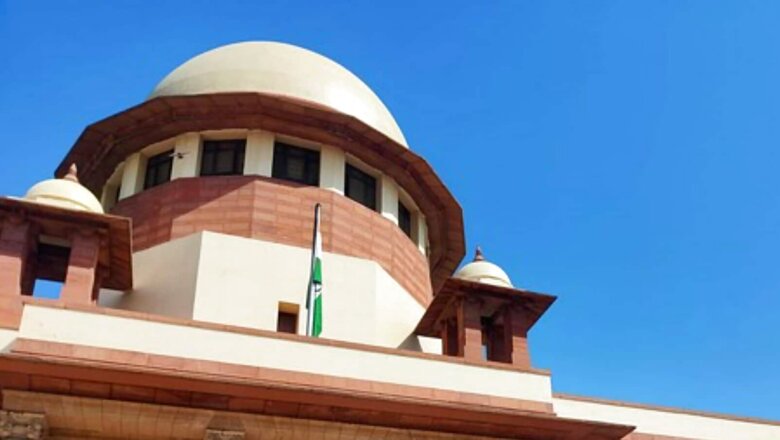
views
“The courts cannot punish the accused on the basis of moral conviction or on suspicion alone,” the Supreme Court held on Monday as it acquitted three death row convicts in the brutal gang-rape and murder of a 19-year-old woman in Delhi’s Chhawla area in 2012, which led to uproar.
Justice Bela M Trivedi, authoring the judgment on behalf of herself, Chief Justice UU Lalit and Justice Ravindra Bhat stated: “The top court acquitted the accused persons namely Rahul, Ravi and Vinod after finding several procedural lapses during the trial. Court found that though the entire case of the prosecution that the victim was raped and brutally murdered rested on circumstantial evidence, the totality of circumstances and the evidence on record were not sufficient to prove the guilt of the accused beyond reasonable doubt.”
The SC found that the “evidence with regard to the arrest of the accused, their identification, discoveries and recoveries of the incriminating articles, the medical and scientific evidence, the report of DNA profiling, the evidence with regard to the CDRs, etc. were not duly proved by the prosecution”.
The court highlighted that none of the witnesses had actually identified the accused persons or the car used in the kidnapping with certainty. There were discrepancies in the statements of the victim’s friend with whom she was returning home.
‘SERIOUS DOUBTS’
The SC also found that the circumstances under which the accused were arrested and the car was seized had raised serious doubts in the story put forth by the prosecution.
“Accused Rahul was arrested by one ASI three days after the incident. The ASI had received a message from the Control Room that a girl had been abducted in a red Indica car, therefore, when he found Rahul in a red color, looking perplexed, without documents of the vehicle, he apprehended him. The other two accused, Ravi and Vinod, had been arrested on the basis of Rahul’s disclosure statement,” the court said.
Uttarakhand | On the decision that the court has made, I've spoken to Advocate Charu Khanna who is handling the case & Union Law Minister Kiren Rijiju. The victim is the daughter of our country & we'll do everything to ensure she gets justice: CM PS Dhami on Chhawla rape case https://t.co/4cjDlNFZ9h pic.twitter.com/9blNKtwY2H— ANI UP/Uttarakhand (@ANINewsUP) November 8, 2022
JUSTICE TRIVEDI WROTE
“As per the settled legal position, in order to sustain conviction, the circumstances taken cumulatively should form a chain so complete that there is no escape from the conclusion that within all human probability, the crime was committed by the accused only and none else. The circumstantial evidence must be complete and incapable of explanation of any other hypothesis than that of the guilt of the accused and such evidence should not only be consistent with the guilt of the accused but should be inconsistent with his innocence.”
However, in the present case, the SC found that the evidence presented before the court were not proved by the prosecution by unerringly pointing the guilt of the accused.
‘CONFESSION NOT EVIDENCE; trial court passive umpire’
The top court found the trial court allowed the disclosure statements of the three accused to be admitted in evidence, although the said statements were recorded when the accused were in police custody.
The SC stated, “The law in this regard is very clear that the confession before the police officer by the accused when he is in police custody, cannot be called an extra-judicial confession”.
The court clarified if a confession is made by the accused before the police, and a portion of such confession leads to the recovery of any incriminating material, such portion alone would be admissible under Section 27 of the Evidence Act, and not the entire confessional statements, which was done in the present case.
Therefore, the apex court held that the trial court had committed gross error in exhibiting the entire disclosure statements of the accused for being read in evidence.
Moreover, the top court found that in the present case, the trial court had acted as a “passive umpire” and the accused were deprived of their “rights to have a fair trial”.
Why are we failing to deliver Justice to Rape victims? In Chhawla Rape case the Rapist were given death penalty on the basis of evidence. It was upheld by high Court so what happened in Supreme Court ?Why should women believe in Justice system?Rapist are at large.— Dr. Ranjana Kumari (@ranjanakumari) November 7, 2022
ACID POURED INTO HER EYES, ATTACKED WITH SPANNER
On February 9, 2012, when the woman, originally from Uttarakhand who used to work in Gurgaon’s Cyber City area, was returning home with her friends, three men abducted her in a car.
The woman’s body was later found in a mutilated and decomposed state, where she was attacked with a jack and spanner and acid had been poured into her eyes, in a village in Rewari, Haryana.
The police investigations revealed that one of the convicts allegedly took revenge after the woman turned down his proposal.
The trial court, in 2014, awarded the death penalty to the three men, terming the case “rarest of rare” and the same was ratified by the high court.
Read all the Latest India News here


















Comments
0 comment